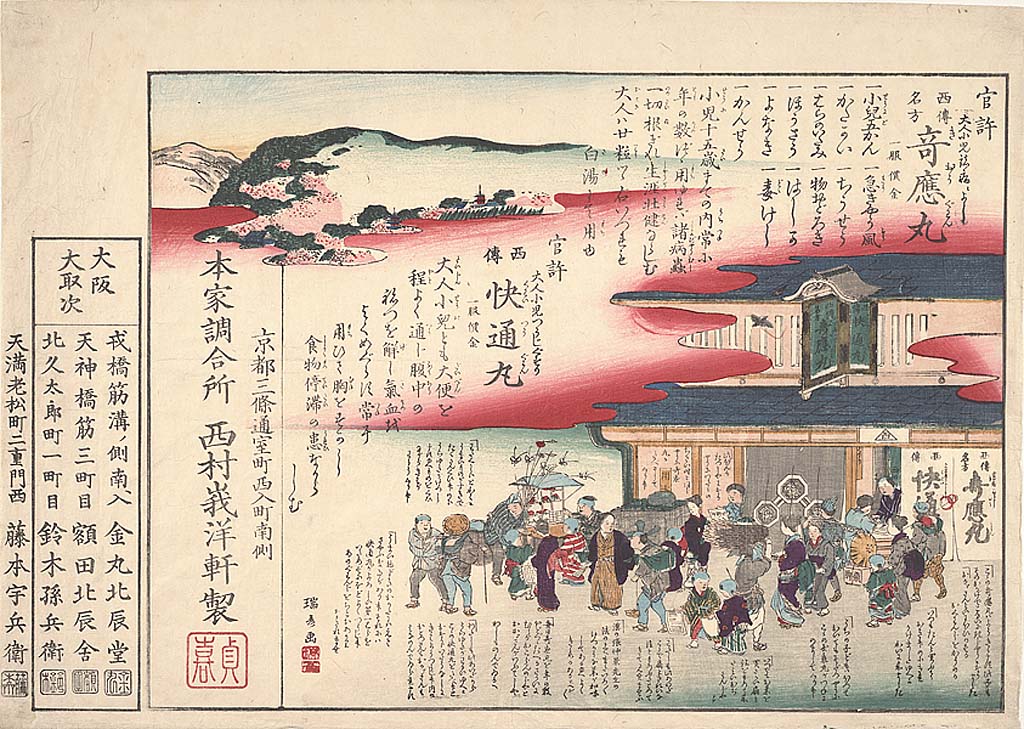The University of California, San Francisco (UCSF) holds a collection of 400 health-themed woodblock prints from 19th-century Japan, all illustrated in the ukiyo-e manner. The collection feature adverts for drugs, cosmetics and pharmacies, advice on the treatment of measles, cholera and other contagious diseases, how to care for a child care, what do look for during pregnancy, and the right way to get Buddhist or Shinto deities to intervene to ensure a cure.
Many of the prints date to the mid- to late 1800s, when Japan was opening to the West after almost two hundred and fifty years of self-imposed isolation. There’s a section on how to avoid contracting illnesses from foreigners.

Shōni-yaku-ō Kindoru-san (Kinder-puwder) King of children’s drug- – a drug advertisement by Morikawa, Chikashige ,1880
Celebrity sold. As in the image above, kabuki actors were used to sell medicines. The actors above are Ichikawa Danjuro (IX), in the role of the court lady Kunai no tsubone, and Onoe Kikugoro (V) as the warrior Takada Sannosuke . The drugs company has sponsored the show playing at the Shintomiza theater.
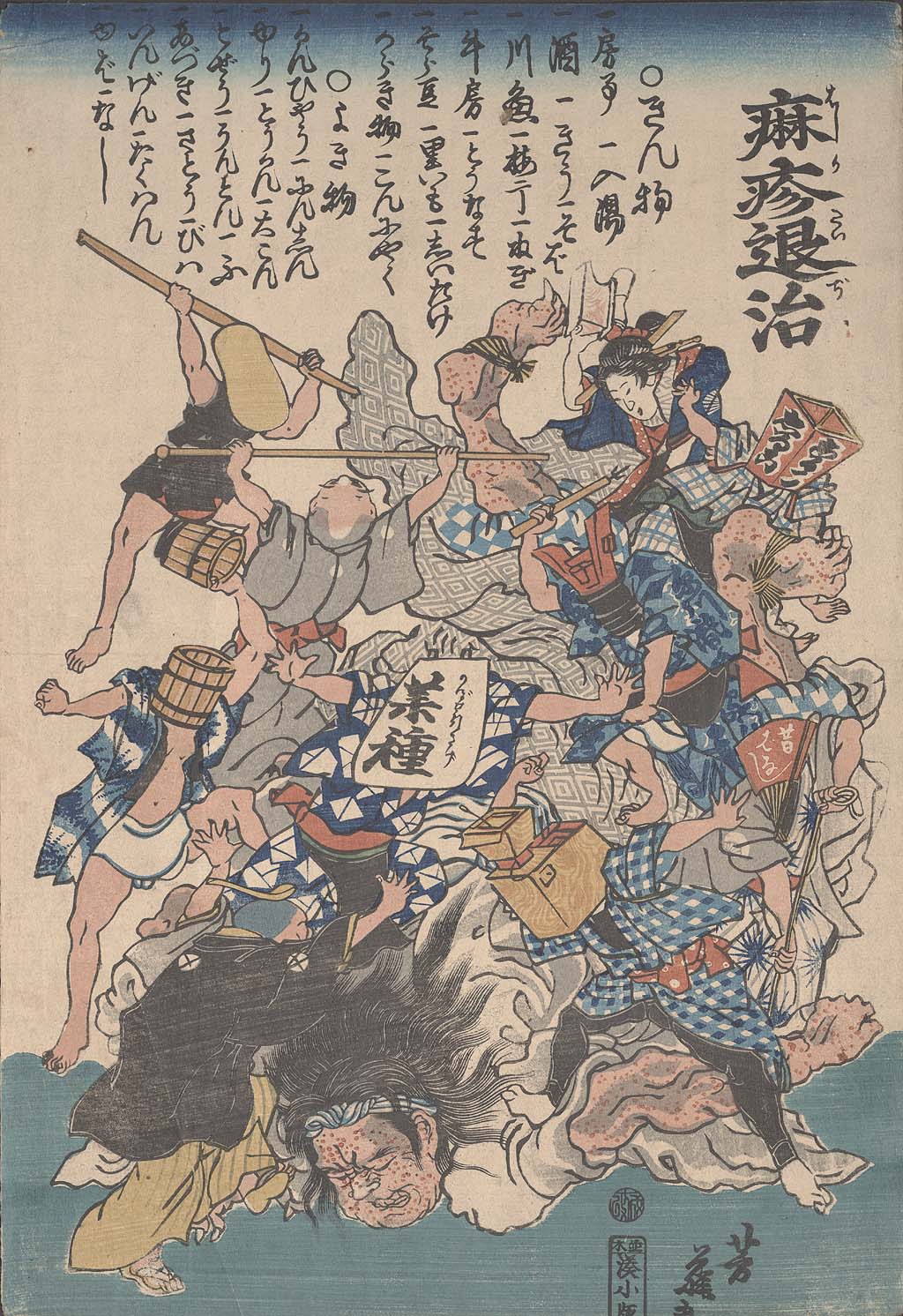
Hashika tai ji Conquesting measles by Utagawa, Yoshifuji – c. 1840
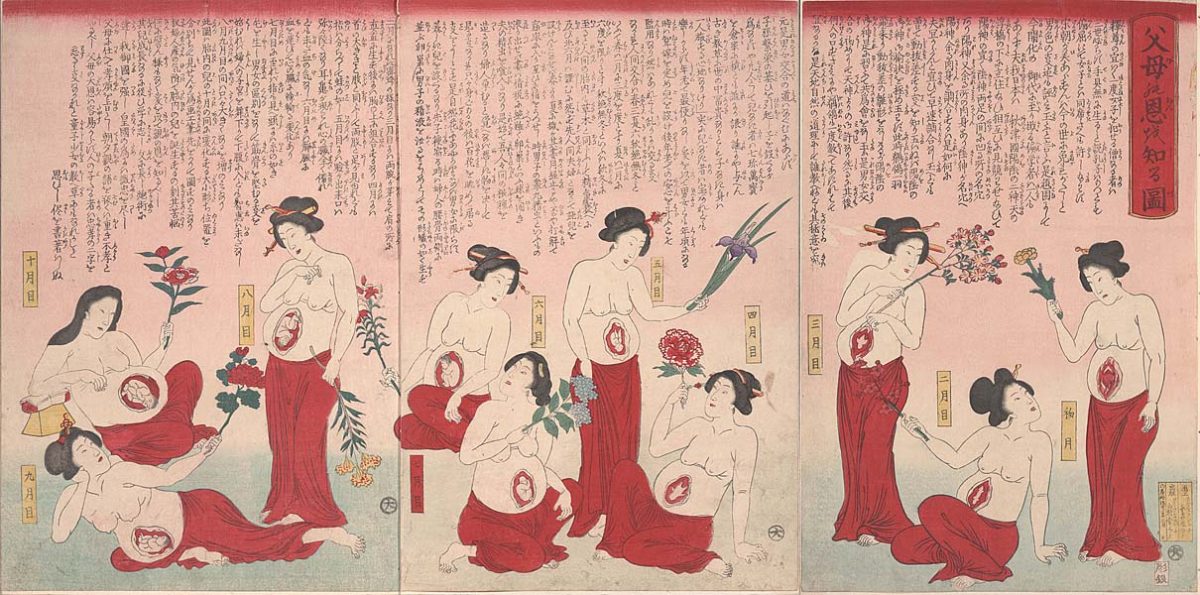
Fubu no on o shiru zu – Realize one’s parental love by Utagawa, Yoshitora, 1880

Kinrai ryūkō kabuki uwasa Kenbutsu no hara
Internal bodily functions dramatized by popular kabuki actors

Ōtsue bushi- Ōtsue song on measles
Many of the amulets and magical practices used in Japan in connection with smallpox are red – just like in Jewish mysticism, the color is believed to offer protection from evil. According to the Shōni hitsuyō yōikugusa, published in 1798 by Kazuki Gyūan, “children suffering from smallpox should wear red garments, and all those caring for the sick should also wear red, as if the rash reddened, they would recover safely.”
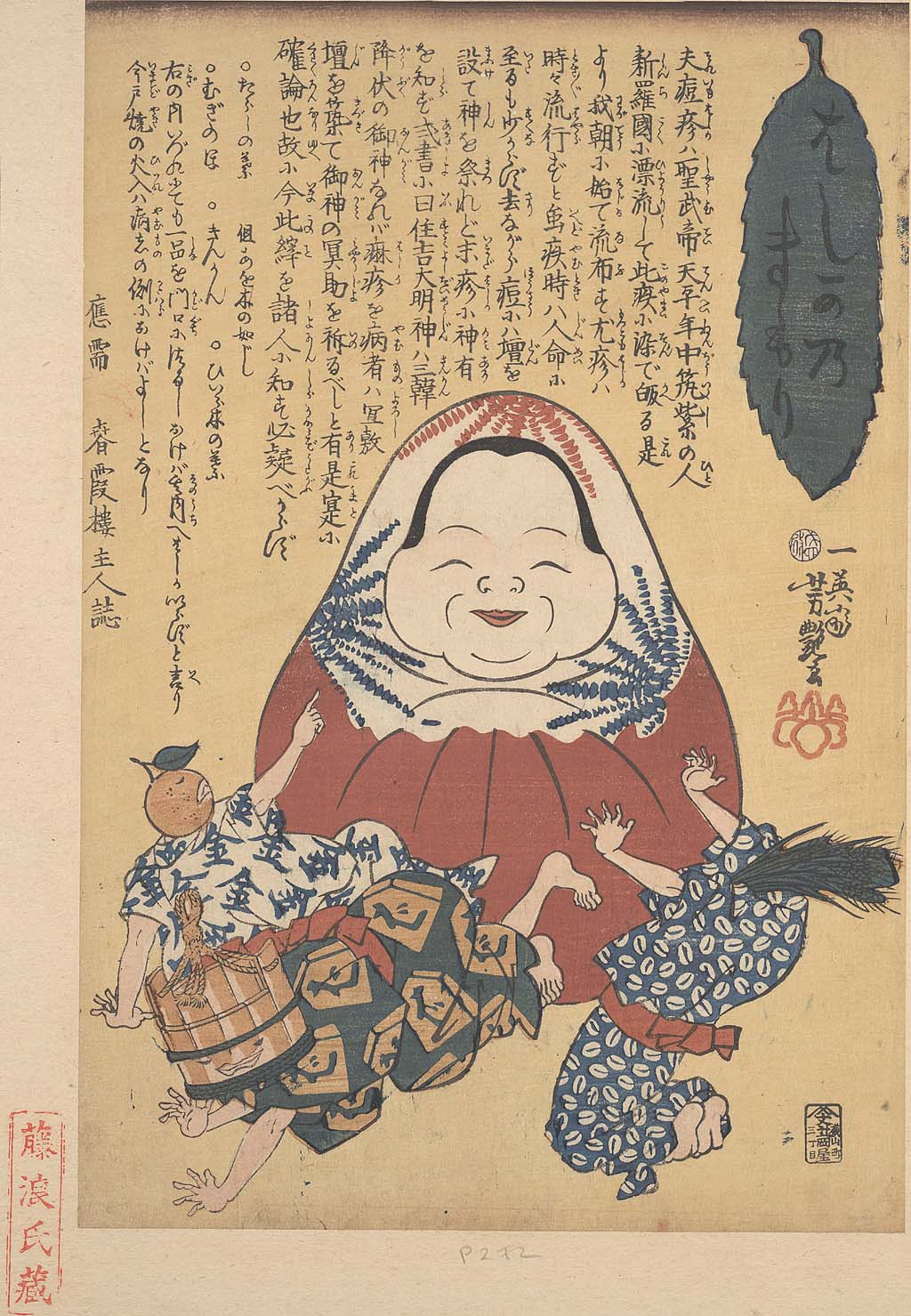
Hashika no mamori – Charm against measles by Utagawa, Yoshitsuya, 1862
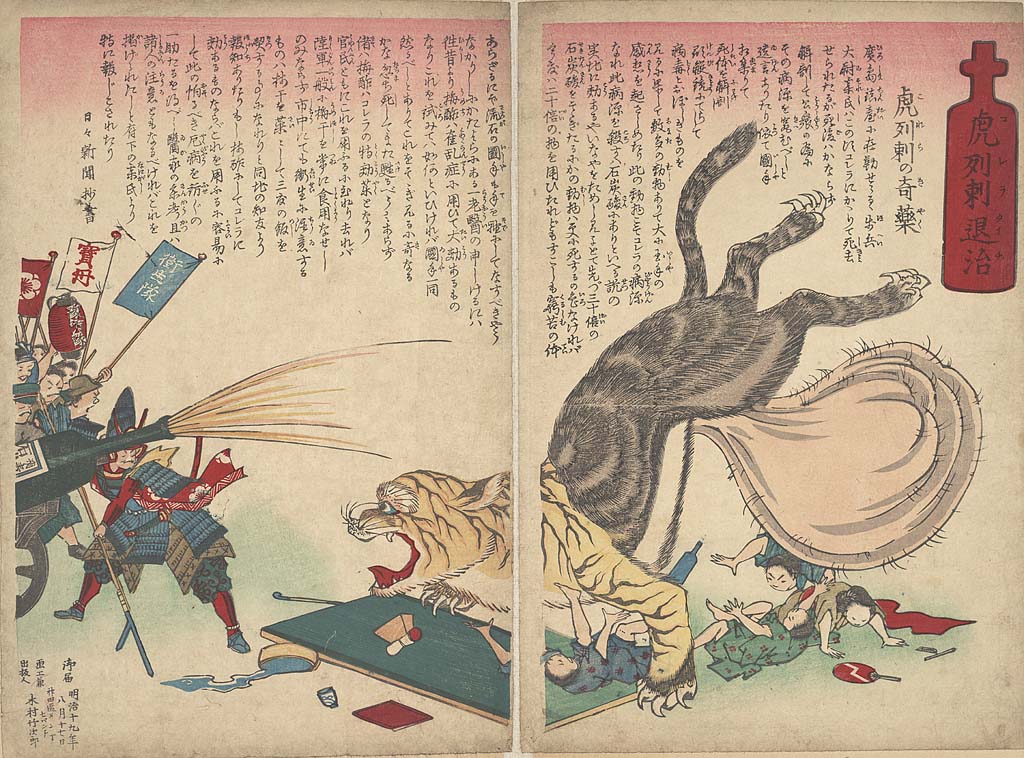
Defeating cholera by Kimura, Takejiro, 1886
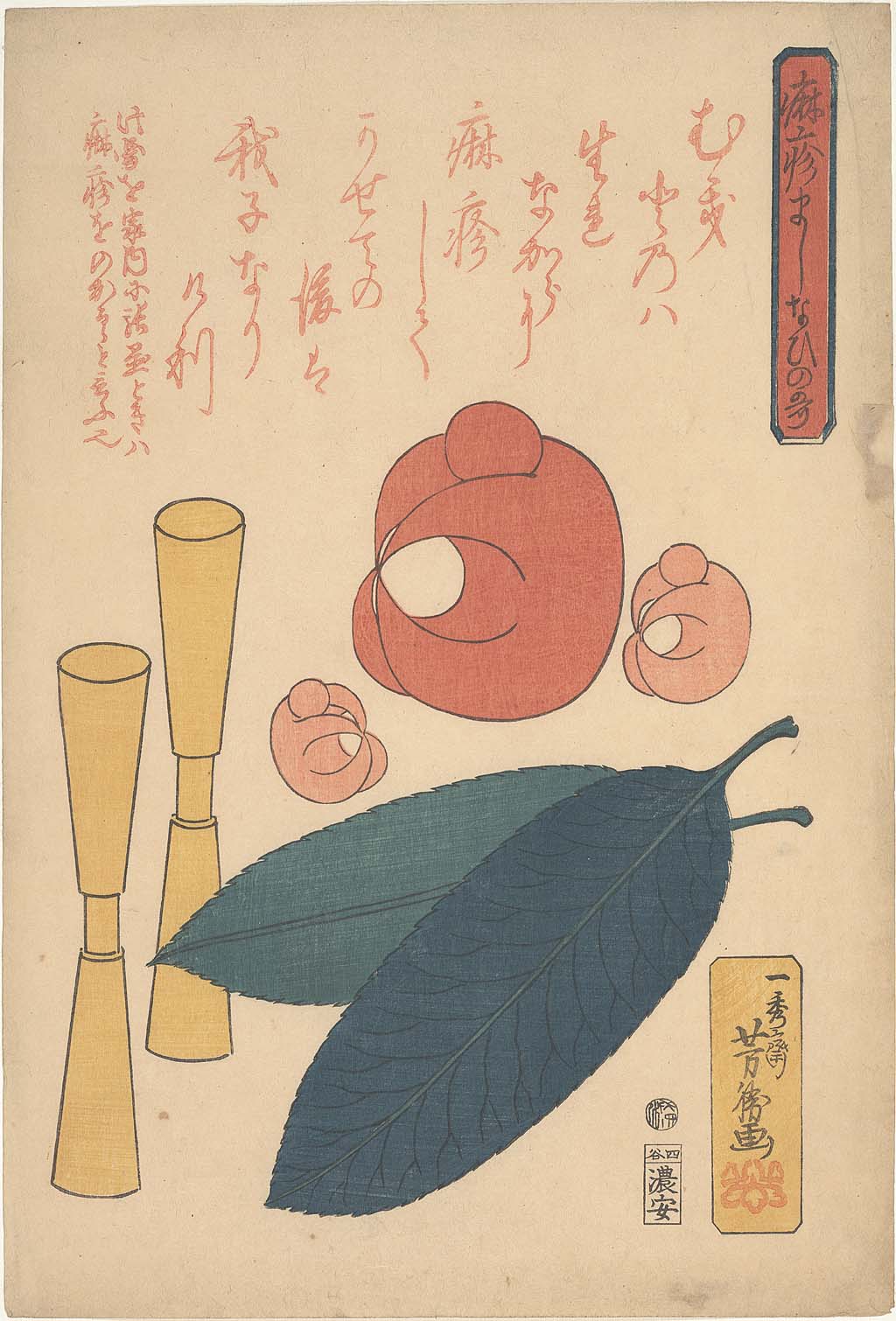
Hashika majinai no uta – Poetic charm against measles by Utagawa, Yoshikatsu, 1862
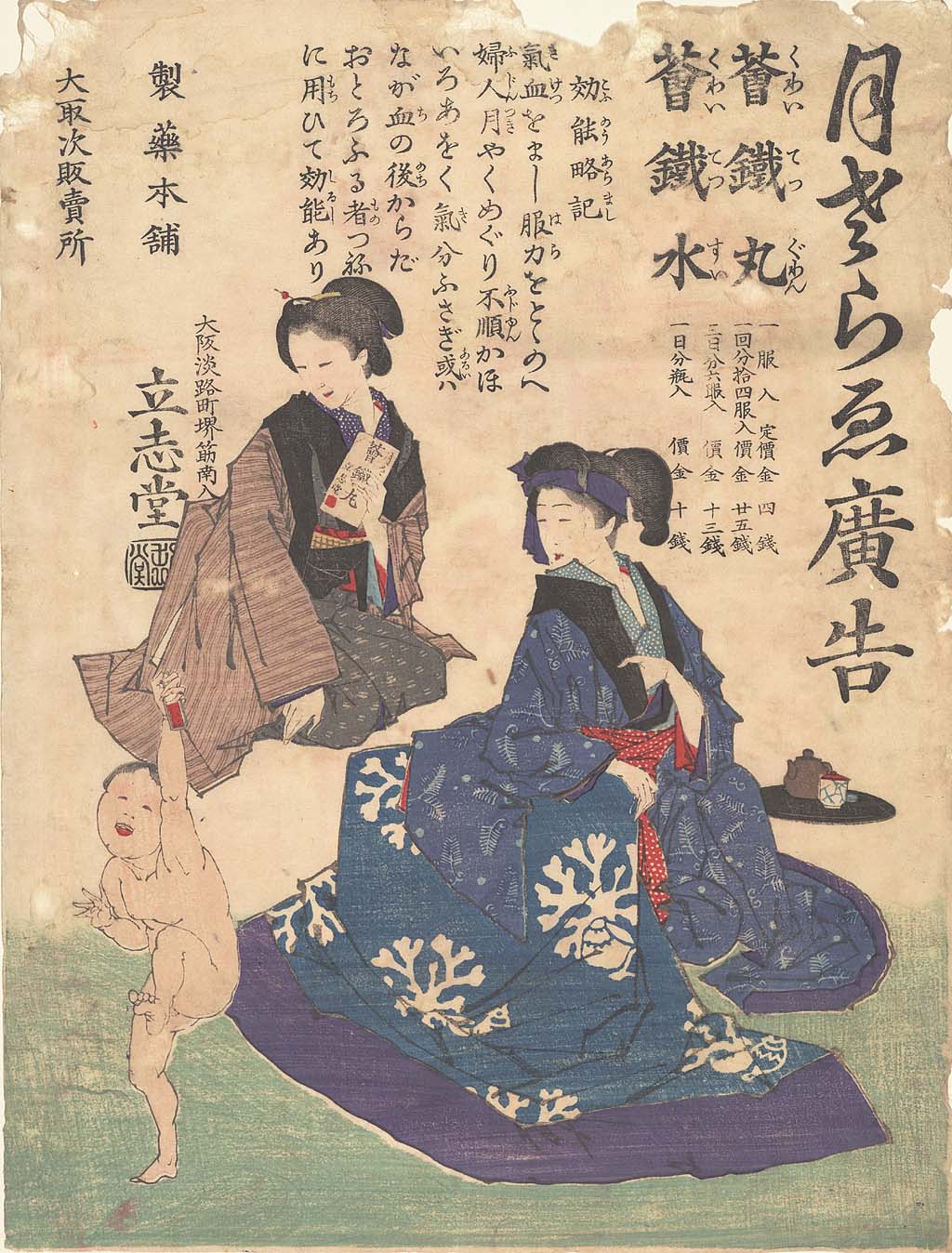
Tsukisarae kokoku; Kaitetsu-gan, Kaitetsu-sui – monthly cleansing – c. 1830
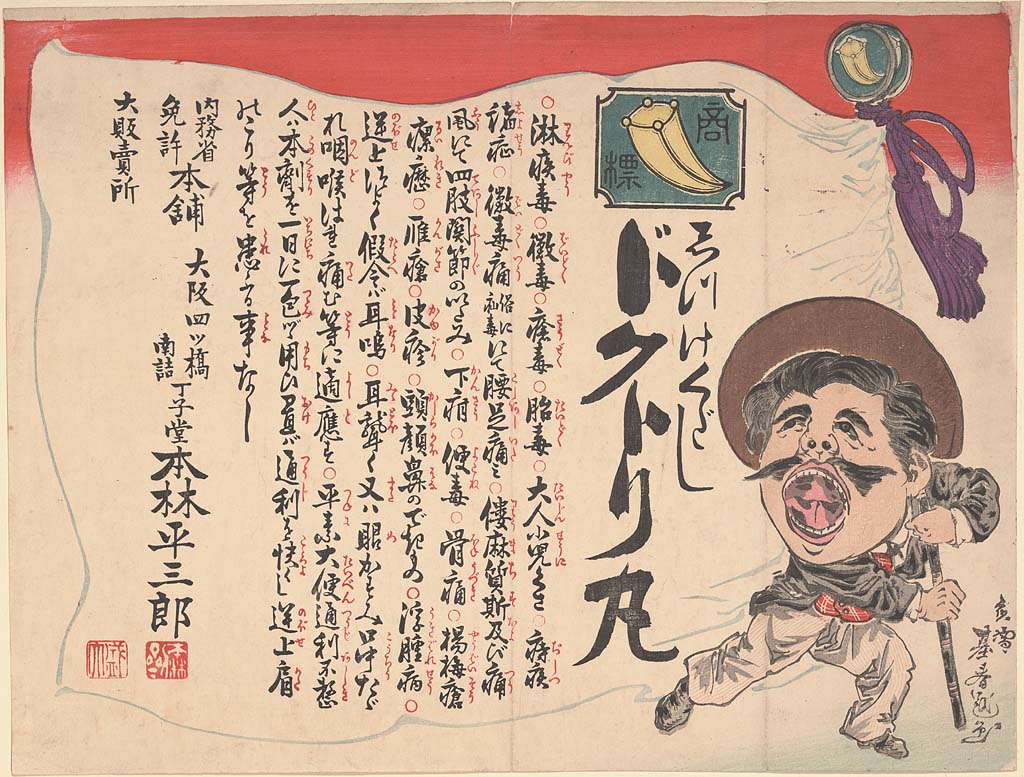
Kitsuke kudashi dokutori-gan Dokutori – pill for cleansing by Hayashi, Motoharu, c. 1900

Nobose hikisage gozōen Gozōen for reducing dizziness, 1860s

Title- Kyō maruyama okaruyaki – Lightly baked confection by Kyō maruyama

Hikan yakuōen – drug for spleen and liver, 1895

Fukunai dokusō-gan – Internal poison cleansing pills (if taken for a month, cleans various poison sicknesses such as syphilis and gonorrhea)

Mimochi on’na natsu no tawamure – Gotō juttai no zu Pregnant women playing in summer heat – 5 heads with 10 bodies by Utagawa, Kunitoshi, 1881
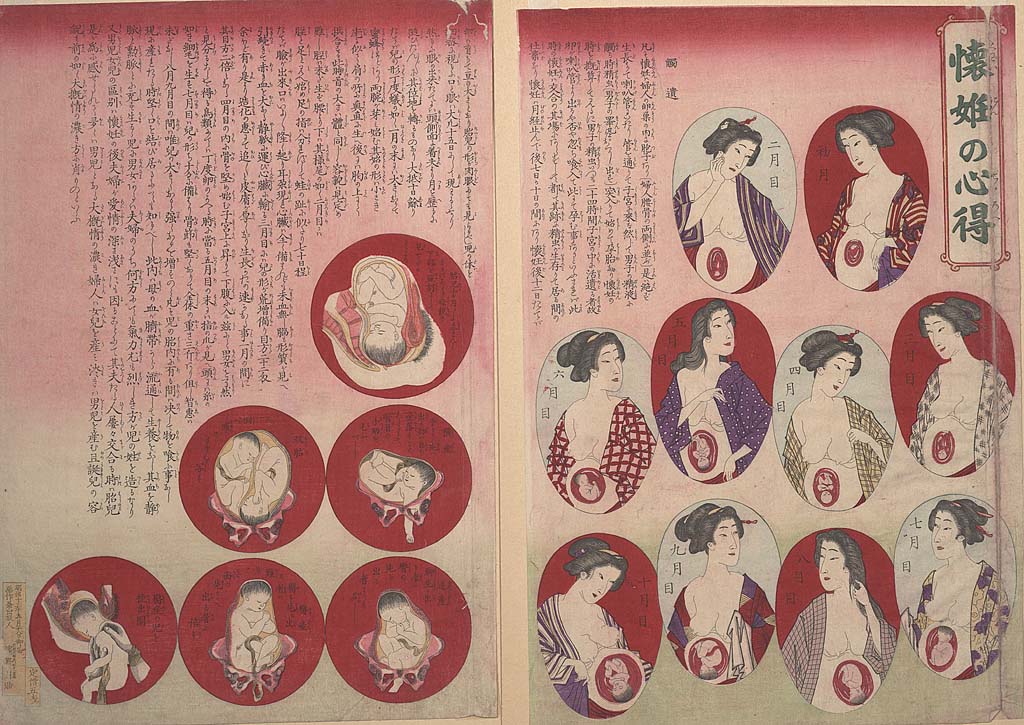
Kainin no kokoroe – Information on pregnancy by Hamano, Teisuke, 1880
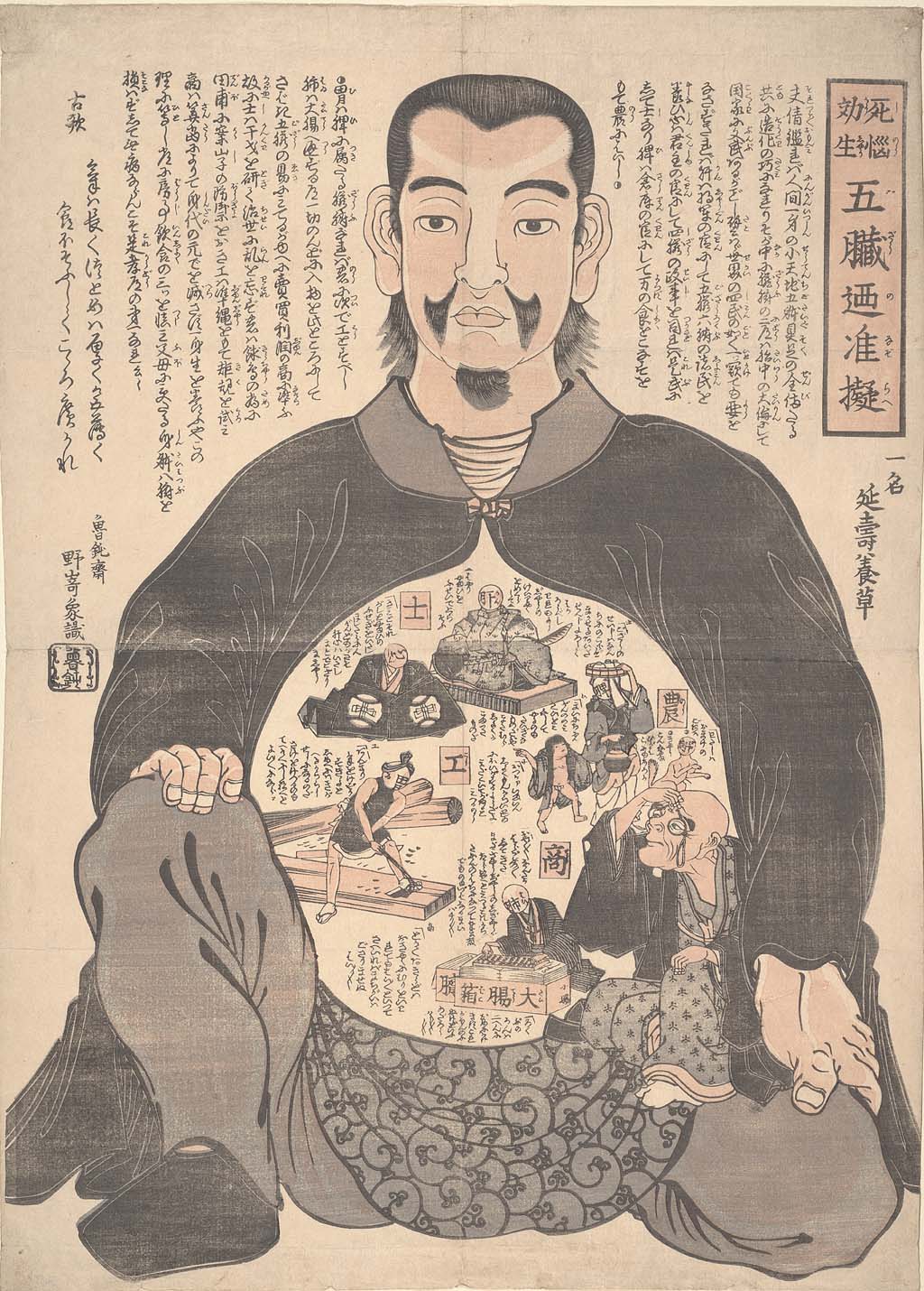
Shinō kōshō gozō no nazorae – Suffering, death, and effective life: metaphorical classifying organs according to 4 levels of social status, shinō kōs hō (samurai, farmer, artisan, merchant) by Rodonsai, Nozoki Shōshiki

Tainai jukkai no zu Ten realms within the body – Utagawa, Kuniteru III, c. 1885
![Ōtsu-e shosa no uchi – Daikoku, Fukuroku From themes of Otsu paintings – Daikoku and Fukuroku [household gods] Description: Daikoku on a ladder, shaving the top of Fukuroku's head Creator/Contributor: Utagawa, Toyokuni III, 1786-1865, Artist Date: 1857](https://flashbak.com/wp-content/uploads/2021/10/Title-Otsu-e-shosa-no-uchi-–-.jpeg)
Ōtsu-e shosa no uchi – Daikoku, Fukuroku – From themes of Otsu paintings – Daikoku and Fukuroku [household gods]
Description: Daikoku on a ladder, shaving the top of Fukuroku’s head by Utagawa, Toyokuni III, 1857
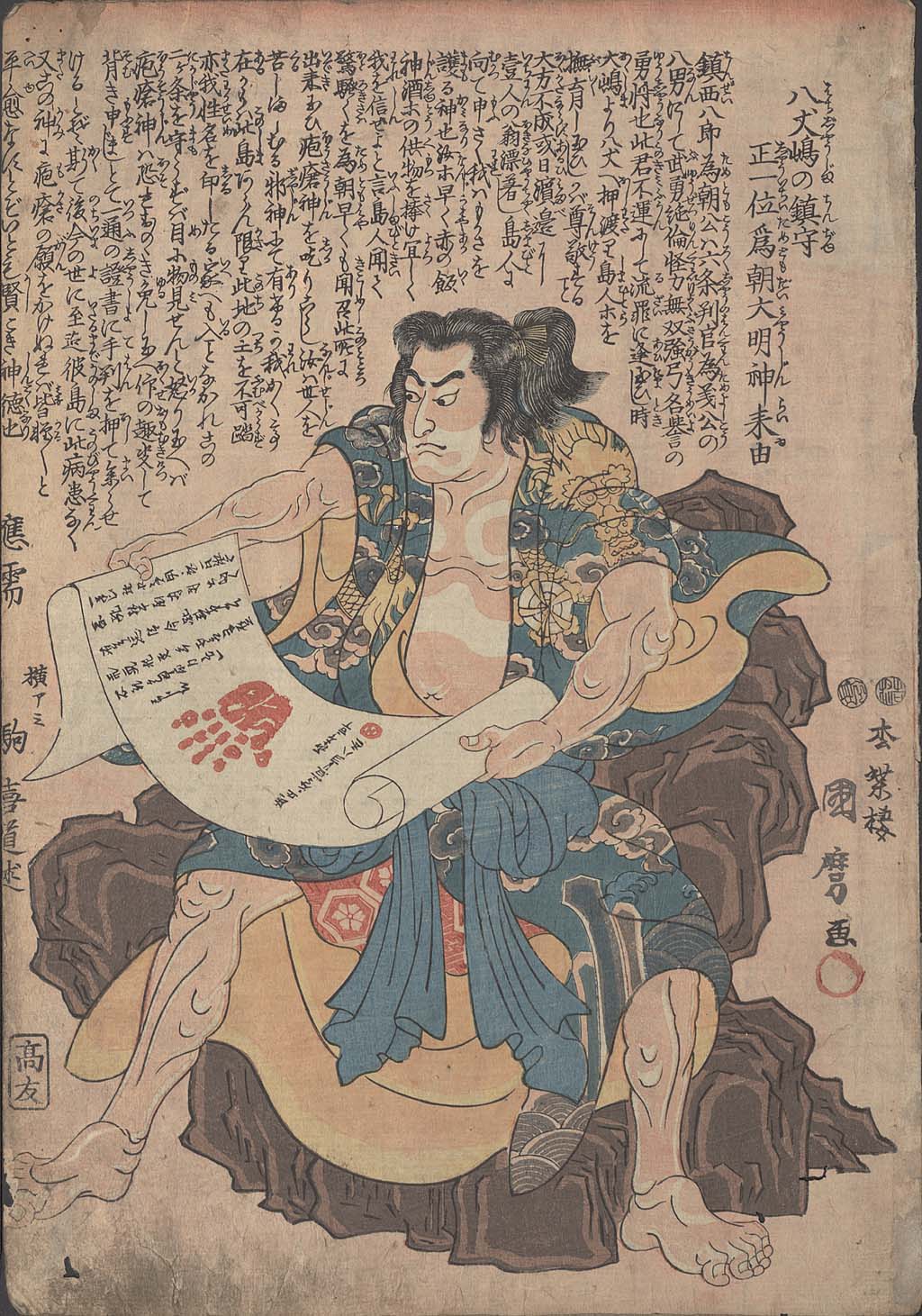
Hachijō-jima no chinju, shō ichii Tametomo Daimyōjin raiyu – Legend of Tametomo, great bright god, guardian of Hachijō island by Utagawa, Kunimaro I, 1860s

Simple view of main Shinyō Tōzan Hall by Utagawa, Kuniyoshi, 1798-1861, Artist c. 1860
Would you like to support Flashbak?
Please consider making a donation to our site. We don't want to rely on ads to bring you the best of visual culture. You can also support us by signing up to our Mailing List. And you can also follow us on Facebook, Instagram and Twitter. For great art and culture delivered to your door, visit our shop.

